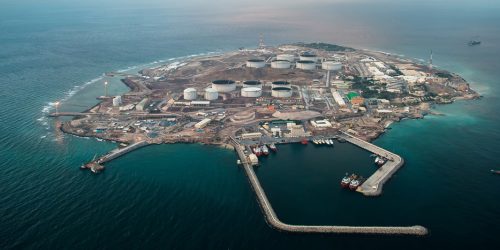Individual GCC states have settled on convoluted ways of distributing natural gas due to a lack of cooperation
The states bordering the Gulf are caught in a cat’s cradle of geopolitical complexity. This is as much the case within the Gulf Cooperation Council (GCC) as it is between certain GCC states and Iran. The muddle is clearly illustrated by the minimal progress among the region’s governments towards coordinating the development of natural gas resources and gas distribution.
At the launch of The Future of Gas in the Gulf in London at the end of June, editor Jonathan Stern said political relations are a problem: “They have worsened in the 2010s, and this accounts for increased interest in LNG imports rather than the expansion of regional pipeline cooperation.”
At the same time, according to Stern, “after China, the largest increase in gas demand to 2030 is projected to be in the Gulf”.
Political tension in a gas-producing region where gas demand is rising fast creates a confusing picture. In the chapter on the UAE, Robin Mills describes the “curious paradoxes” in the market there. With a population of just 9.5mn and the eighth-largest gas reserves in the world, the UAE—itself an LNG exporter—”is nevertheless a significant and growing gas importer”. And neighbouring Oman is one of the suppliers of LNG to the UAE, while the UAE itself hosts the pipeline that brings Qatari gas to Oman.
Qatar remains the global gas success story of the Gulf region. The Qataris announced in April 2017 that they were lifting the self-imposed moratorium on further North Field development. Two months later, Howard Rogers points out, Saudi Arabia, the UAE and Bahrain cut diplomatic and economic ties with Qatar after “accusing it of supporting extremism”. But he suggests that jealously at Qatar’s worldwide achievements in gas may have played a part in the decision to impose the economic blockade: for its “gas-short” neighbours, Qatar’s “success in creating a global LNG trade network for its inherently low-cost resource base was arguably irksome”.
But Qatar is pressing ahead undeterred, planning to lift LNG capacity from the current 77mn t/yr to 110mn t/yr by the mid-2020s. Debottlenecking plans—on hold for now—might justify still further capacity expansion in the late 2020s if strong Asian LNG demand growth persists and US LNG exports (whether due to financing or resource maturity issues) reach a plateau, says Rogers.
For most of the states in and around the Gulf, rising demand for electricity is fuelling the hunger for more gas. Osamah Alsayegh and Bassam Fattouh point out that in Kuwait, air-conditioning systems account for around 70pc of peak and over 45pc of annual electricity consumption. Kuwait “resorts to burning crude oil to meet demand during summer, although the volumes are modest in comparison to its neighbours Saudi Arabia and Iraq”. Once again, LNG imports have come to the rescue, allowing Kuwait’s crude burn to drop from around 60,000bl/d in 2008 to 15,000bl/d in 2017.
No overnight change
Saudi Arabia is also considering LNG imports and is prioritising the exploitation of more gas from its own fields. Nevertheless, according to Bassam Fattouh and Rami Shabaneh, there will be no overnight change: “The scope for substituting oil with gas in the power sector is great, but due to infrastructure constraints, the limited availability of gas and potential changes in the relative price of fuel, liquids burning is anticipated to continue playing an important role in power generation, especially during summer, in our time horizon (2030).”
The Future of Gas in the Gulf, with an individual chapter on each state, is well supported by data in the form of clear graphs, tables and maps. It is an invaluable handbook on the current gas scene there, with useful supply and demand forecasts, and commentary on the success so far on the tricky job of removing subsidies. The book will contribute to a better understanding of how the various countries are facing up to gas challenges—complicated by the messy geopolitical backdrop that severely limits scope for regional cooperation.





